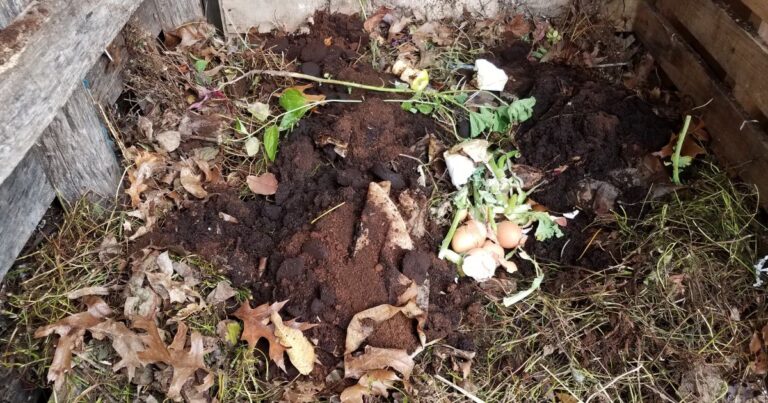Cathy Rust Chrysanthemum: A Comprehensive Guide
Understanding Cathy’s Rust Chrysanthemum
Cathy’s Rust Chrysanthemum is a beautiful and unique variety of chrysanthemum that is known for its rusty red coloration. This particular cultivar is part of the Asteraceae family and is a popular choice for gardeners and florists alike.
| Entity | Information |
|---|---|
| Chrysanthemum | Cathy’s Rust Chrysanthemum is a specific cultivar of chrysanthemum that is known for its rusty red coloration. Chrysanthemums are a popular choice for gardeners and florists due to their wide range of colors and shapes. |
| Cathy’s Rust | Cathy’s Rust is the name of the specific cultivar of chrysanthemum that has a rusty red coloration. This cultivar is named after its unique color and is a popular choice for gardeners and florists. |
| Chrysanthemum ‘Cathy’s Rust’ | Chrysanthemum ‘Cathy’s Rust’ is the full name of the specific cultivar of chrysanthemum that has a rusty red coloration. |
| Asteraceae | Cathy’s Rust Chrysanthemum is part of the Asteraceae family, which is one of the largest families of flowering plants. This family includes many popular garden flowers such as daisies, sunflowers, and asters. |
Cathy’s Rust Chrysanthemum is a hardy plant that is easy to care for and can thrive in a variety of growing conditions. It is a perennial plant that can grow up to 3 feet tall and 2 feet wide. This cultivar prefers full sun and well-draining soil, but can also tolerate partial shade and poor soil conditions.
When it comes to using Cathy’s Rust Chrysanthemum in floral arrangements, it pairs well with other fall colors such as oranges, yellows, and browns. This cultivar also looks great when paired with greenery such as eucalyptus or ferns.
Overall, Cathy’s Rust Chrysanthemum is a beautiful and unique cultivar of chrysanthemum that is easy to care for and looks great in a variety of settings. Its rusty red coloration makes it a popular choice for fall-themed floral arrangements, but it can also be used year-round to add a pop of color to any garden or floral arrangement.
Plant Profile
Physical Characteristics
Cathy Rust Chrysanthemum is a herbaceous perennial with a clump-forming growth habit. It grows to a height of 2.00 to 3.00 feet and spreads to a width of 1.50 to 2.00 feet. The plant has yellow daisy-like flowers with rusty red tips and yellow centers. The flowers bloom in late summer to early fall and attract butterflies and bees. The plant has a moderate growth rate and can be easily propagated by division.
Growth Habits
Cathy Rust Chrysanthemum prefers full sun to partial shade and well-drained soil. It is tolerant of drought and heat but may require additional watering during hot and dry periods. The plant is hardy in USDA zones 5 to 9 and can be grown in containers or in the ground. It is easy to maintain and requires minimal pruning.
| Entity | Description |
|---|---|
| Plants | Cathy Rust Chrysanthemum is a herbaceous perennial. |
| Yellow | The plant has yellow daisy-like flowers. |
| Red | The flowers have rusty red tips. |
| Rust | Cathy Rust Chrysanthemum is named for its rusty red tips. |
| Daisy Garden Mum | The plant is a type of garden mum with daisy-like flowers. |
| Yellow Centers | The flowers have yellow centers. |
| Herbaceous Perennial | Cathy Rust Chrysanthemum is a herbaceous perennial. |
| Rusty Red | The flowers have rusty red tips. |
| 2.00 to 3.00 Feet | The plant grows to a height of 2.00 to 3.00 feet. |
| Clump | The plant has a clump-forming growth habit. |
In summary, Cathy Rust Chrysanthemum is a beautiful and easy-to-grow herbaceous perennial that can add color and interest to any garden. Its yellow daisy-like flowers with rusty red tips and yellow centers are a standout feature. The plant is hardy and easy to maintain, making it a great choice for novice and experienced gardeners alike.
Planting and Care
Location and Sunlight
Cathy rust chrysanthemums thrive in full sun, which means at least 6 hours of direct sunlight each day. The plant can grow in partial shade, but it may not produce as many flowers. When planting in the fall, ensure the plant has enough sunlight to grow before frost sets in.
Soil and Watering
Cathy rust chrysanthemums prefer well-drained soil that is moist but not waterlogged. A soil pH of 6.0 to 6.5 is ideal. Water the plant regularly, but avoid overwatering, which can lead to root rot. Water the plant at the base to avoid getting the leaves wet, which can lead to disease.
Container and Garden Planting
Cathy rust chrysanthemums can be planted in containers or gardens. When planting in a container, ensure it has drainage holes and use well-draining soil. Place the container in a location with enough sunlight. When planting in a garden, ensure there is enough space between plants to allow for airflow. Plant in late summer or early fall, before the first frost.
| Container Planting | Garden Planting |
|---|---|
| Use well-draining soil | Ensure enough space between plants |
| Place in a location with enough sunlight | Plant in late summer or early fall |
| Ensure the container has drainage holes |
Cathy rust chrysanthemums attract butterflies and can add color to a border or porch. With proper planting and care, the plant can thrive and produce beautiful flowers.
Safety Information
When it comes to Cathy Rust Chrysanthemum, there are a few safety considerations to keep in mind. Here are some important points to remember:
- Toxicity: Cathy Rust Chrysanthemum is toxic to both humans and animals. The plant contains pyrethrins, which can cause skin irritation, respiratory problems, and gastrointestinal distress if ingested. Keep the plant out of reach of children and pets.
- Allergies: Cathy Rust Chrysanthemum may cause allergic reactions in some people. If you have a history of allergies, be cautious when handling the plant. Wear gloves and avoid touching your face or eyes after handling the plant.
- Perennial: Cathy Rust Chrysanthemum is a perennial plant that can grow up to 2-3 feet tall. It requires well-draining soil and full sun to thrive. If you plan on planting Cathy Rust Chrysanthemum in your garden, make sure to choose a location that meets these requirements.
- Pets and Service Animals: As mentioned earlier, Cathy Rust Chrysanthemum is toxic to pets. If you have a dog or cat, make sure to keep them away from the plant. If you have a service animal, be aware that the plant may cause allergic reactions or other health problems.
Cathy Rust Chrysanthemum is a beautiful plant that requires some extra care and attention due to its toxicity and potential to cause allergic reactions. If you plan on growing Cathy Rust Chrysanthemum in your garden, make sure to take the necessary precautions to keep yourself, your family, and your pets safe.
Recommended Reading:
- Hibiscus coccineus – Scarlet Rosemallow
- Cathy Rust Chrysanthemum – a variety of Chrysanthemum
- Dormant Plumeria – a variety of Frangipani
- Red Cascade Climbing Rose – a variety of Rose
- Naranjilla plant – Solanum quitoense, also known as Lulo
- Wild Jasmine plant
- Rosa rugosa ‘Therese Bugnet’ – a variety of Rugosa Rose
- Amethyst Falls Wisteria in bud – a variety of Wisteria
- Nicotiana langsdorffii – Green-flowered Tobacco
- Colchicum-speciosum – Autumn Crocus
Frequently Asked Questions
What is the rarest color of chrysanthemum?
The rarest color of chrysanthemum is blue. However, blue chrysanthemums are not naturally occurring and have been genetically modified to produce the blue pigment. Therefore, they are not widely available in the market.
How do you control white rust in chrysanthemums?
White rust is a fungal disease that affects chrysanthemums. The best way to control white rust is by using fungicides. The most effective fungicides for controlling white rust in chrysanthemums are copper-based fungicides. It is important to follow the instructions on the fungicide label carefully to avoid overuse.
What does chrysanthemum mean?
Chrysanthemum means “golden flower” in Greek. It is a symbol of happiness, longevity, and good luck in many cultures. In Japan, it is the symbol of the Emperor and the Imperial family.
What are the most common diseases affecting chrysanthemums?
The most common diseases affecting chrysanthemums are powdery mildew, gray mold, and white rust. Powdery mildew is a fungal disease that causes a white powdery coating on the leaves and stems. Gray mold is a fungal disease that causes a grayish-brown mold on the flowers and leaves. White rust is a fungal disease that causes white spots on the leaves.
How do you care for chrysanthemums in pots?
Chrysanthemums in pots require regular watering and fertilization. They should be watered when the top inch of soil is dry to the touch. Fertilize them with a balanced fertilizer every two weeks during the growing season. They should be placed in a location that receives at least six hours of sunlight per day.
What is the best time to plant chrysanthemums?
The best time to plant chrysanthemums is in the spring or fall. Plant them in a location that receives at least six hours of sunlight per day. They should be planted in well-draining soil and watered regularly. Deadheading the spent flowers will encourage new growth and prolong the blooming period.
| FAQ | Answer |
|---|---|
| Rarest color of chrysanthemum | Blue, but not naturally occurring |
| How to control white rust | Use copper-based fungicides |
| Meaning of chrysanthemum | “Golden flower” symbolizing happiness, longevity, and good luck |
| Common diseases affecting chrysanthemums | Powdery mildew, gray mold, and white rust |
| Caring for chrysanthemums in pots | Regular watering, fertilization, and at least six hours of sunlight per day |
| Best time to plant chrysanthemums | Spring or fall in well-draining soil with regular watering |
The rarest color of chrysanthemum is blue. However, blue chrysanthemums are not naturally occurring and have been genetically modified to produce the blue pigment. Therefore, they are not widely available in the market.
“}},{“@type”:”Question”,”name”:”How do you control white rust in chrysanthemums?”,”acceptedAnswer”:{“@type”:”Answer”,”text”:”
White rust is a fungal disease that affects chrysanthemums. The best way to control white rust is by using fungicides. The most effective fungicides for controlling white rust in chrysanthemums are copper-based fungicides. It is important to follow the instructions on the fungicide label carefully to avoid overuse.
“}},{“@type”:”Question”,”name”:”What does chrysanthemum mean?”,”acceptedAnswer”:{“@type”:”Answer”,”text”:”
Chrysanthemum means \”golden flower\” in Greek. It is a symbol of happiness, longevity, and good luck in many cultures. In Japan, it is the symbol of the Emperor and the Imperial family.
“}},{“@type”:”Question”,”name”:”What are the most common diseases affecting chrysanthemums?”,”acceptedAnswer”:{“@type”:”Answer”,”text”:”
The most common diseases affecting chrysanthemums are powdery mildew, gray mold, and white rust. Powdery mildew is a fungal disease that causes a white powdery coating on the leaves and stems. Gray mold is a fungal disease that causes a grayish-brown mold on the flowers and leaves. White rust is a fungal disease that causes white spots on the leaves.
“}},{“@type”:”Question”,”name”:”How do you care for chrysanthemums in pots?”,”acceptedAnswer”:{“@type”:”Answer”,”text”:”
Chrysanthemums in pots require regular watering and fertilization. They should be watered when the top inch of soil is dry to the touch. Fertilize them with a balanced fertilizer every two weeks during the growing season. They should be placed in a location that receives at least six hours of sunlight per day.
“}},{“@type”:”Question”,”name”:”What is the best time to plant chrysanthemums?”,”acceptedAnswer”:{“@type”:”Answer”,”text”:”
The best time to plant chrysanthemums is in the spring or fall. Plant them in a location that receives at least six hours of sunlight per day. They should be planted in well-draining soil and watered regularly. Deadheading the spent flowers will encourage new growth and prolong the blooming period.
\n
\n\n
\n
\n
\n
\n
\n
\n\n
\n
\n
\n
\n
\n
\n
\n
\n
\n
\n
\n
\n
\n
\n
\n
\n
\n
\n
\n
\n
\n
\n
\n
\n
| FAQ | Answer |
|---|---|
| Rarest color of chrysanthemum | Blue, but not naturally occurring |
| How to control white rust | Use copper-based fungicides |
| Meaning of chrysanthemum | \”Golden flower\” symbolizing happiness, longevity, and good luck |
| Common diseases affecting chrysanthemums | Powdery mildew, gray mold, and white rust |
| Caring for chrysanthemums in pots | Regular watering, fertilization, and at least six hours of sunlight per day |
| Best time to plant chrysanthemums | Spring or fall in well-draining soil with regular watering |
“}}]}


